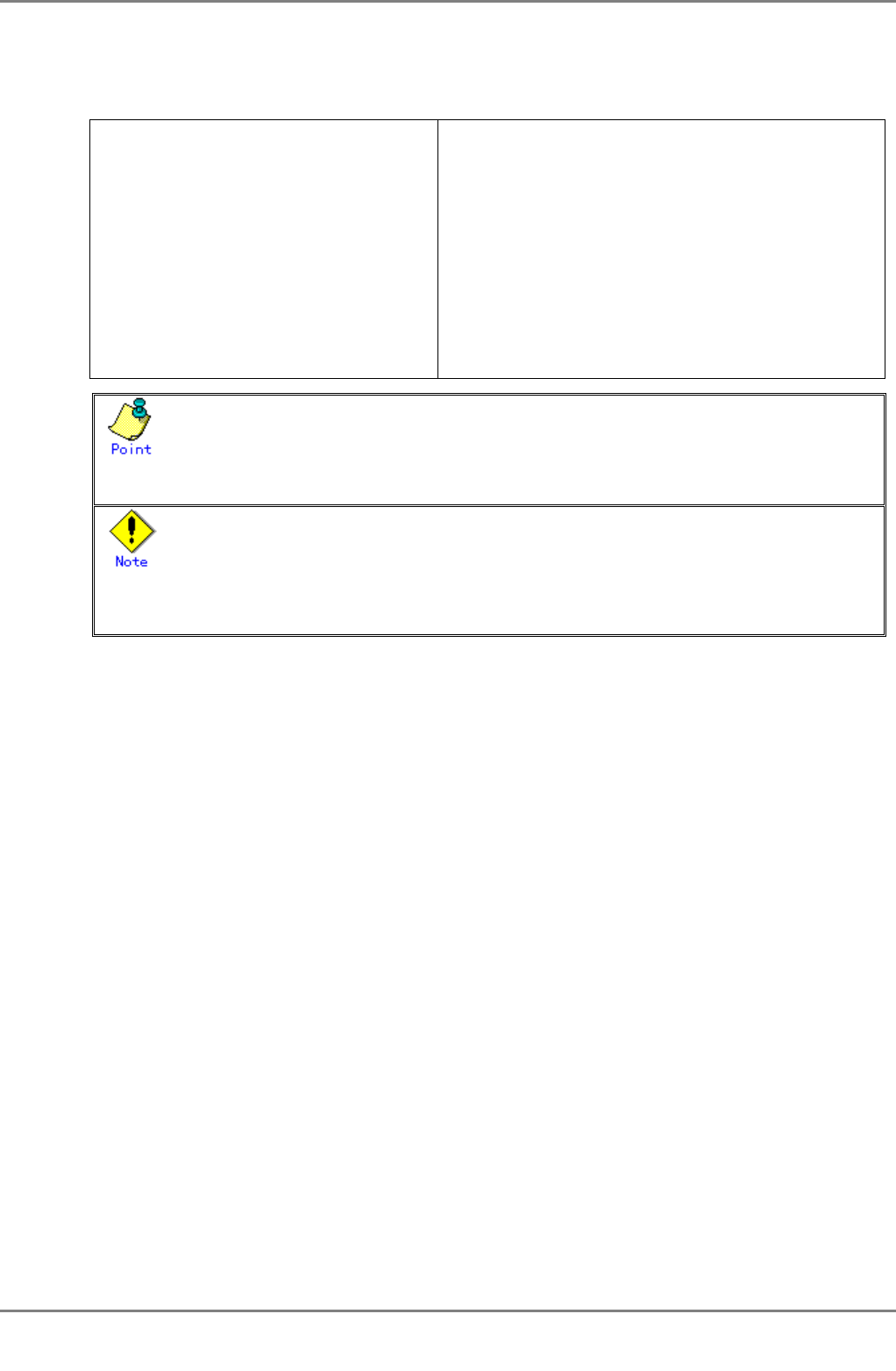
XG2000 series User's Guide
15/315
All Rights Reserved, Copyright (C) PFU LIMITED 2009
Entering a specific command allows switching from one mode to another. Entering the "exit" command returns program control
to the previous mode.
Entering "end" command or pressing [Ctrl] and [Z], or [C] simultaneously in the global configuration, interface edit or terminal
edit mode transfers program control to the administrator EXEC mode.
An example is given below.
Login: admin
password: ********
xg> enable
xg# configure terminal
xg(config)# interface port 1
xg(config-if)# exit
xg(config)# exit
xg# copy running-config startup-config
xg# exit
Switch to operator EXEC mode by performing a login operation.
By default, the login username is "admin" and password "password".
Use the "enable" command to switch to administrator EXEC mode.
Use the "configure terminal" command to switch to global
configuration mode.
Use the "interface" command to switch to interface edit mode.
Use the "exit" command to return to global configuration mode.
Use the "exit" command to return to administrator EXEC mode.
Copy the current configuration file in memory to the startup-config in
the nonvolatile memory.
User is logged out and session is disconnected.
z Multiple users can use the operator and administrator EXEC modes concurrently. (Up to 5 terminals)
z Only one terminal can switch to global configuration, interface edit or terminal edit modes at a time. It is not possible for
multiple terminals to simultaneously switch to global configuration mode.
z Pressing [Ctrl] and [C] simultaneously in the global configuration, interface edit or terminal edit mode transfers program
control to the administrator EXEC mode when “- -more- -“ is displayed in the last line in the console screen.
(“- -more- -“ is displayed when display command, such as “show”, is executed and information exceed the console
screen)


















